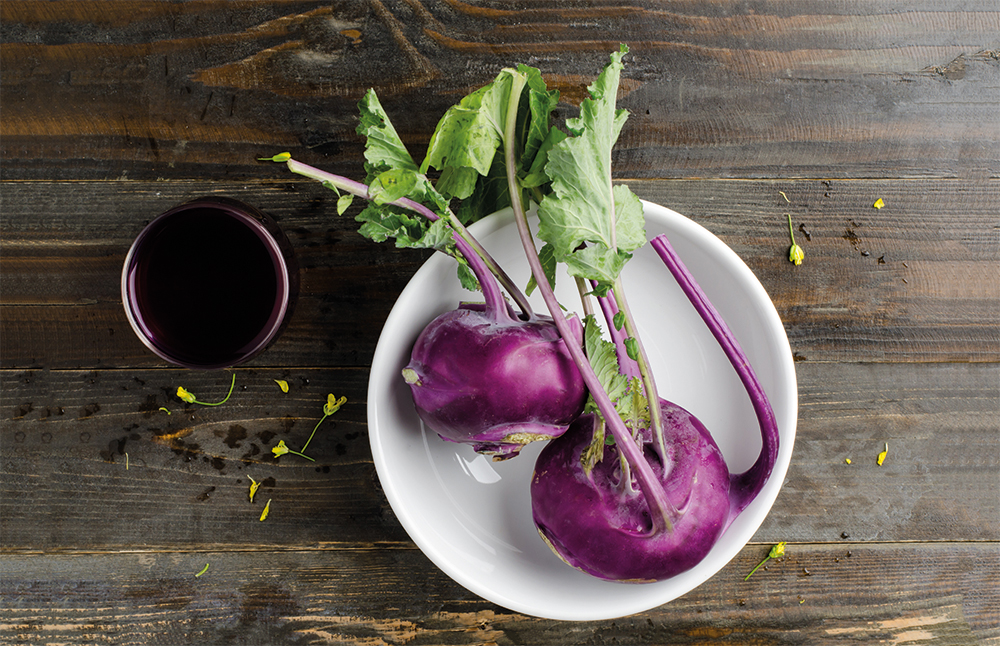During his experiments with unusual ingredients, Alex Rushmer has found himself falling in love with the versatile but underappreciated ‘cabbage turnip’
One of the benefits of spending my working week standing in front of a stovetop (albeit a sleek and cool induction cooker rather than a stainless steel, gas-powered furnace) is that I get to play around with a near endless supply of new ingredients and techniques. Not all make it beyond the development stage and onto the menu, no matter how hard we try.
The parasol mushrooms may have been locally foraged, but that didn’t stop them from being unpalatably slimy. And despite cooking them for several hours, we couldn’t remove the final tannic dryness from the young green pine cones delivered to the kitchen a few weeks ago. (The resultant syrup, however, is delicious and is being used to enhance one of the offerings on our non-alcoholic drinks pairing.)
But for every failure, there is a happy success. We’ve recently been utterly smitten with an oft-overlooked – and distinctly alien-looking – member of the brassica family. Kohlrabi has long been a staple ingredient in German kitchens and, consequently, in the parts of America that have enjoyed significant numbers of German émigrés over the last few centuries. Its etymology, too, is German, and in translation simply means ‘cabbage turnip’, which gives a fairly generous hint as to its flavour, although it is more subtle and refined than both.
For years, I knew of it only by name, and from an intriguing non-recipe in Fergus Henderson’s Beyond Nose to Tail. More recently, Simon Rogan featured several (more detailed) recipes in his cookbook, and that was enough to pique my interest.
But for every failure, there is a happy success
What became clear very quickly is just how versatile it is as an ingredient. Raw, it has a subtle brassica flavour similar to broccoli stem, but with an underlying sweet acidity and gentle pepperiness, reminiscent (but not as assertive) of the playful heat of watercress. Thinly sliced, it makes an excellent addition to a salad or can happily play the central role in the production of a remoulade – an old-school French bistro classic where the lead is usually taken by celeriac dressed in mayonnaise pepped up with mustard and lemon.
Cooking kohlrabi softens some of the vegetable’s sharper flavours and dulls the spikier notes, while accentuating some of the more cabbagey tones present in even the distant branches of the brassica family tree. That soft heat dissipates, and the texture transforms into something more yielding and giving – it would work well cooked with cream in the manner of a dauphinoise or covered in a cheesy white sauce and baked in a hot oven with nothing but a smattering of breadcrumbs for company.
Our preferred method, though, is to peel the bulbous stems, cover them entirely in a crude salt dough, then bake them for 30 minutes at 180°C. The salt dough performs two functions. First, it seasons the kohlrabi and, second, concentrates the flavour by evaporating water from the vegetable. After cooling for half an hour, the salt dough is cracked open like a large dinosaur egg, the kohlrabi is rinsed under cold water and then sliced very thinly on a mandolin to form the base of our daily salad. Any leftover pieces get diced and tossed together with oil, vinegar, fresh herbs, nuts, seeds and a handful of raisins to make a simple salad.
A word of caution though: despite our commitment to reducing food waste and trying to adopt a ‘root to tip’ approach, I’m yet to find a way to make use of the rather attractive-looking leaves of the plant. Any suggestions would be gratefully received.

